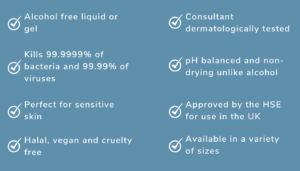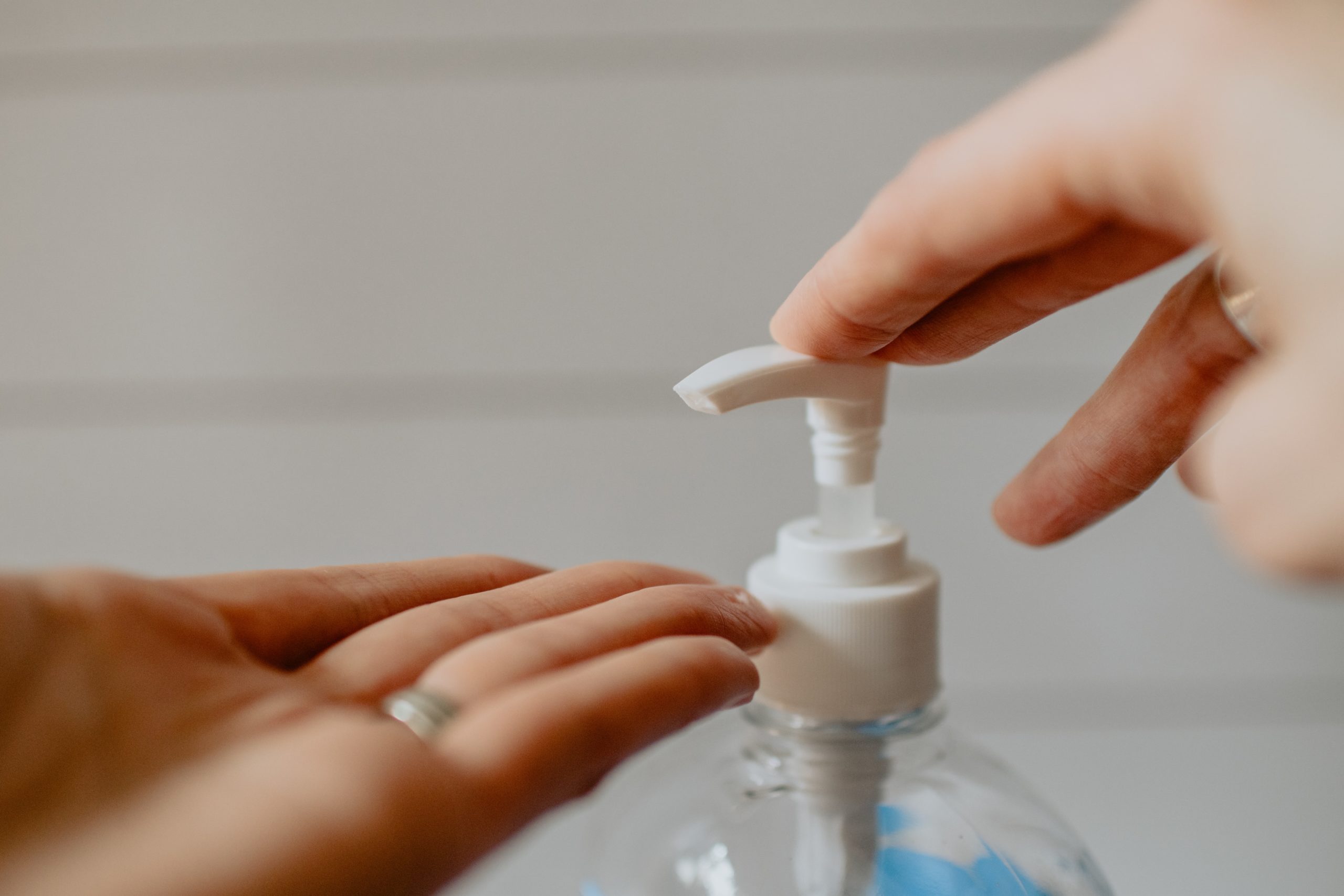/
/
Hypochlorous acid hand sanitiser versus alcohol
Hypochlorous acid hand sanitiser vers...
Hypochlorous acid hand sanitiser versus alcohol
In the world of skincare and personal hygiene, hypochlorous acid (HOCl) is making waves as a game-changing ingredient. But one question often arises: is hypochlorous acid safe for skin? The short answer is yes.
03.11.21
Hypochlorous hand sanitiser versus alcohol
With the launch of our fully approved SALVESAN SKIN range, harnessing the power of our hypochlorous acid without any of the side-effects of alcohol sanitisers we look at the reasons why you should make the switch from alcohol to hypochlorous acid hand sanitisers.
WHY GO ALCOHOL FREE?
Alcohol has been the staple, go-to ingredient for hand sanitisers since the start of the pandemic as a well-established product. The World Health Organization recommend its use as alcohol-based sanitisers can be made quickly, easily and cheaply in less-developed countries and is therefore applicable across the globe. However, alcohol-based hand sanitisers mostly contain isopropanol, ethanol, n-propanol, or a mixture of these as their active ingredients which can be harmful to the skin with frequent use, causing cracked skin and excema.
It has also been found that the minimum 70% alcohol is often ignored by manufacturers. Independent Which? tests have revealed that some alcohol-based hand sanitisers contain a fraction of the alcohol content they claim to, leaving those who buy them unknowingly unprotected from coronavirus – and other bacteria and viruses these products are supposed to kill.
Scarily, those that are at 70% are causing alcohol poisoning in children. during the early five months of 2020, the American Association of Poison Control Center reported 9504 alcoholic hand sanitiser exposure cases in children under the age of 12 years and recognised that even a small amount of alcohol can cause alcohol poisoning in children causing confusion, vomiting and drowsiness, and in severe cases, respiratory arrest and death.
This article by Lecturer in Medical Microbiology at the University of Westminster sums up the potential harm in her article Five ways the pandemic surge in hand sanitisers may not be great news in the long term:
Alcohol sanitisers:
- Can be toxic if misused
- Can cause skin conditions such as cracked skin and excema
- Can be lethal if ingested by children – this article
- Can ignite if near naked flames
- Cause anti-microbial resistance to superbugs
- Are ineffective against some pathogens such as E. coli and Norovirus
- Cause altered microbiomes on the skin
- Are harmful to the environment.
WHAT IS THE ALTERNATIVE?
Washing with soap and water is still the best recommended practice however, there is an alcohol-free alternative. If you’re on the go and don’t have access to soap and water, you can use hypochlorous acid to clean your hands.
WHAT IS HYPOCHLOROUS ACID?
Hypochlorous acid, or HOCl, sounds scary but is one of nature’s most effective antiviral substances found within our white blood cells as part of our immune system.
Hypochlorous acid is a gentle sanitising option that doesn’t have many of the chemical downsides of alcohol and other sanitisers. It also has no skin allergens or irritants, is dermatologically tested and hypoallergenic so you don’t need to rinse it off.
At Aqualution, we are the leading manufacturer of hypochlorous acid in the UK and Europe and are the only manufacturer to have been able to create a stable version using our unique electrolysis cell. Our range of Salvesan Skin products come in pure hypochlorous acid liquid form as well as a new, first-to-market gel formulation, perfect for dispensing units. Both are fully approved by the HSE for use on the skin.
IS IT AS EFFECTIVE?
Yes, its efficacy is second-to-none, killing 99.99% of harmful enveloped viruses and 99.9% of bacteria, including many specific viruses that alcohol gels are ineffective on. Salvesan Skin has also been rigorously tested to British Standards and approved by HSE. Not only is Hypochlorous incredibly effective, but as a substance found within our immune system it is as gentle on our skin as water, meaning it won’t dry your skin out like alcohol-based hand sanitisers.
HOW TO USE?
For both the liquid spray and gel, apply onto hands liberally (minimum 5ml), rub together ensuring you cover the hand including around the fingers, leave to dry naturally.
MAKE THE SWITCH TO SALVESAN SKIN

